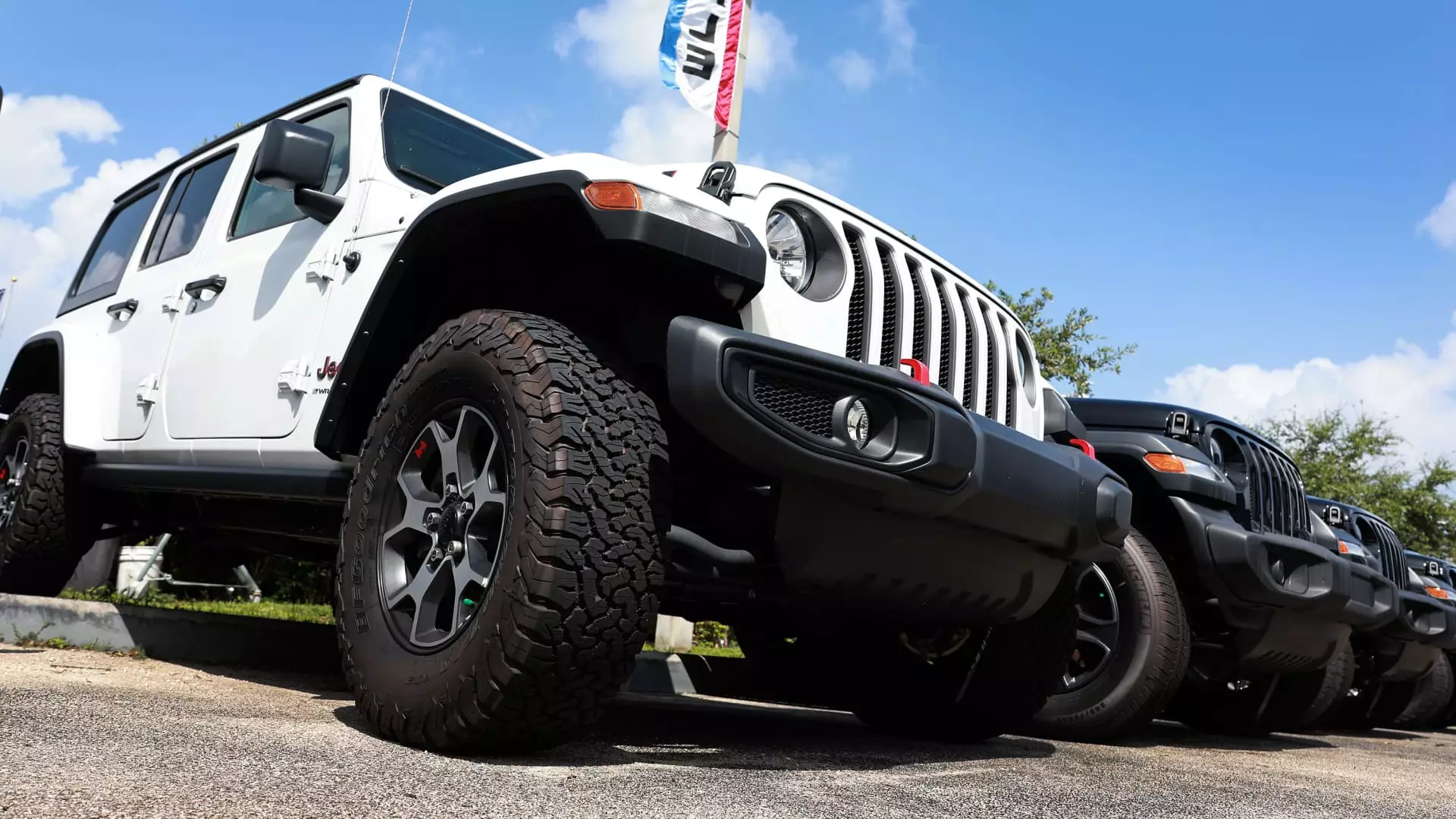The U.S. automotive sector is experiencing a complex and tumultuous phase in 2024, characterized by a series of economic headwinds that have hindered new vehicle sales. Predictions suggest that sales are projected to decline by 2% in the third quarter compared to the same period in 2023, marking a significant downturn from the previous quarter. According to insights from industry analysts such as Cox Automotive and Edmunds, approximately 3.9 million vehicles are anticipated to be sold, a figure that underscores the pressing issues plaguing consumers and manufacturers alike.
The decision by the Federal Reserve to adjust interest rates has sparked a sliver of hope among analysts, yet caution prevails as many believe this action may not be sufficient to stimulate a robust recovery in vehicle sales. Charlie Chesbrough, a senior economist at Cox Automotive, exemplified this cautious optimism by stating that while the conditions for the market are slowly improving, affordability remains a critical barrier that continues to stifle buyer interest.
The crisis of affordability in the new vehicle market has emerged as a significant obstacle for prospective buyers. Jessica Caldwell from Edmunds highlights the fact that Americans are increasingly finding it challenging to secure financing for new cars, with average loan amounts now hovering around $40,000. This alarming trend indicates a growing disconnect between consumer incomes and the financial requirements of new vehicle ownership. As the average transaction price for new vehicles rests at an elevated $47,870, many consumers are either postponing their purchases or exploring alternative, more affordable options.
This restriction on purchasing capacity not only affects individual consumers but poses a substantial threat to manufacturers as well. With many vehicles priced beyond the reach of average buyers, manufacturers must reassess their pricing strategies or risk exacerbating their sales declines. As a result, brands that have typically relied on volume sales, such as Stellantis, find themselves at a critical juncture in their business strategies. Stellantis, facing a potential 21% drop in sales, has been forced to prioritize profitability over market share, a shift that could have long-term repercussions for brand loyalty and market positioning.
Amidst these challenges, electric vehicle (EV) sales present a unique juxtaposition in the automotive market. Forecasts suggest an 8% increase in EV sales in the third quarter compared to the previous year. However, this buoyant projection is tempered by the fact that Tesla, the industry leader, is expected to witness a 2.4% decline in its sales. This decline raises critical questions about the sustainability of Tesla’s market dominance in light of emerging competitors and evolving consumer preferences.
While higher incentives are facilitating EV sales, with projections indicating they will account for 13.3% of the average transaction price, it is essential to recognize the implications of relying heavily on government incentives for growth. The current landscape reveals that many consumers are still hesitant to transition to EVs, primarily due to concerns around price, range, and the availability of charging infrastructure. The potential drop in Tesla’s market share below 50% signals a pivotal moment for the company, indicating that while the EV segment is growing, it may not unfold as swiftly as anticipated.
Despite the myriad challenges facing the automotive market, some analysts maintain an optimistic outlook for 2024, predicting total U.S. light-duty vehicle sales could reach approximately 15.7 million. However, Cox Automotive has revised its initial forecast downwards from 16 million, reflecting a recognition that the prevailing economic climate significantly hampers growth prospects.
As the market prepares to enter the fourth quarter, the ongoing issues of affordability and fluctuating consumer confidence will remain critical factors affecting sales performance. Manufacturers that can adapt their offerings to meet the changing demands and financial constraints of consumers may find opportunities to navigate this turbulent landscape successfully.
While the current analysis paints a picture of an automotive market grappling with significant hurdles, it is crucial for stakeholders—manufacturers, consumers, and policymakers—to collaborate towards sustainable solutions that foster growth, accessibility, and innovation in the vehicle market. Only time will reveal how effectively the automotive sector can weather these ongoing challenges and embrace a more robust future.

